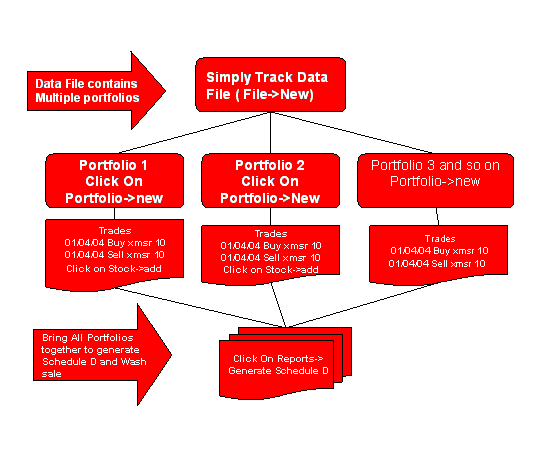A Primer on Wash Sales
Post on: 30 Апрель, 2015 No Comment

Key Points
- The wash sale rule is intended to prevent people from taking losses on securities that they still hold. If you violate the wash sale rule, your loss will be disallowed . Consult your tax advisor if you have questions.
With new cost-basis reporting requirements in effect, more people may run afoul of the wash-sale rule. Here’s some background on the rule and answers to common questions about it.
I want to sell a stock to take a tax loss, but I plan to buy it again because I want it in my portfolio. What are the tax implications?
If you sell a security at a loss and buy the same or substantially identical security within 30 calendar days before or after the sale, the loss is typically disallowed for current income tax purposes. This is because of the so-called wash sale rule.
What is the IRS trying to accomplish with the wash sale rule?
Basically, the wash sale rule is designed to prevent taxpayers from taking losses on securities if they acquire a substantially identical position within 30 days.
How do wash sales work?
A wash sale will trigger several consequences. First, if you violate the wash sale rule you can’t claim your loss. Instead, your loss will be added to the cost basis of the replacement purchase. When you sell the replacement stock, you can recognize the previously disallowed loss. Your holding period for the replacement stock includes the holding period of the stock you sold.
Here’s a quick example of a wash sale.
On 9/30/XX, you buy 500 shares of ABC at $10 per share. One year later the stock price starts to drop, and you sell all your shares at $9 per share on 10/4/XY. Two days later, on 10/6, ABC bottoms out at $8 and you buy 500 shares again. This series of trades triggers a wash sale.
The holding period of the original shares will be added to the holding period of the replacement shares, effectively leaving you with a long-term position. Additionally, the cost basis on your 10/6 purchase will be adjusted to $4,500, reflecting the cost of acquisition ($4,000) plus the $500 disallowed loss from your 10/4 sale.
I want the tax loss, but I don’t want to be out of the market for an entire month just so I can avoid the wash sales rule. What’s my alternative?
You could double up on your position, wait 31 days, and then sell your original loss position. Of course, that means you would be increasing your exposure. But if you don’t want to either be out of the market or increase your exposure for a month, you could take the loss and immediately replace the security you sold with a similar (but not substantially identical) investment that suits your asset allocation and long-term investment plan.
With this strategy, you can also sell off investments that are no longer a good fit and keep your portfolio on track by reinvesting in more suitable, better-rated and/or more tax-efficient securities in the same asset class. That way, while you’re harvesting losses to get the tax break, you can better position your portfolio going forward by rebalancing and improving tax-efficiency.
Here’s a hypothetical example to show how this might work. Let’s say Joan, a single income tax filer, holds position XYZ. She originally purchased XYZ for $6,000, but it’s currently worth only $3,000. The position is part of Joan’s overall portfolio plan, which she wishes to maintain. Joan is reluctant to sell and recognize the loss, especially if it means upsetting her investment plan or being out of (or doubling) the position for 31 days to avoid the wash sale rule. What can she do?
Joan could do a little research to find a suitable replacement. For instance, using Schwab Equity Ratings®, she may find that security ZZZ is as good as or better than XYZ, given her overall goals and objectives. She could simultaneously sell XYZ and purchase ZZZ, avoiding the wash sale rule while maintaining her investment plan.

- Value of position XYZ before transaction: $3,000
- Value of position ZZZ after transaction: $3,000 (less commissions or fees, if any)
As far as her portfolio is concerned, Joan is in the same financial position after the sale as she was before (less commissions or fees). But, if Joan has a combined federal/state marginal income tax bracket of 35%, she could also receive a current income tax benefit of up to $1,050. In effect, her loss would be reduced from 50% to 32.5%. The scenario would hold true if XYZ and ZZZ were individual stocks in the same industry or mutual funds with similar investment objectives.
If I purchase and sell shares of a stock at a loss in one of my Schwab accounts and then repurchase them in another Schwab account, will I still trigger the wash sale rule?
Yes. Wash sale rules apply to the investor rather than to a particular account when an investor holds multiple accounts. IRS regulations only require Schwab to track and report wash sales on the same CUSIP number (a unique nine-character identifier for a security) within the same account. Individual taxpayers are responsible for tracking sales in different accounts (their own and their spouse’s) for the purposes of the wash sale rule.
Does the wash sale rule apply to options, ETFs and mutual funds?
Yes. Keep in mind that if the security has a CUSIP number, then it’s subject to wash-sale rule reporting. Switching from one ETF to the identical index in another fund or ETF could trigger the wash-sale rule. There are ways around this problem. For example, investors holding the Schwab S&P 500 Index Fund at a loss might consider switching into the more diversified Schwab Total Stock Market Index Fund. The same idea could apply to similar, but not substantially identical ETFs.
What happens if I sell at a loss in a taxable account and then immediately repurchase it in a retirement account, such as an IRA?
The IRS has ruled (Rev. Rul. 2008-5 ) that when an individual sells stock or securities for a loss and causes his or her IRA or Roth IRA to buy substantially identical stock or securities within 30 days before or after the sale, the loss on the sale is disallowed under section 1091 and the individual’s basis in the IRA or Roth IRA is not increased by virtue of section 1091(d).
Can I sell at a loss on December 15 in order to harvest losses for the current tax year and then purchase the shares back in early January?
No. Wash-sale rules are not confined to calendar years, so in this situation, your loss would be deferred if you reacquired the position within 30 days.














